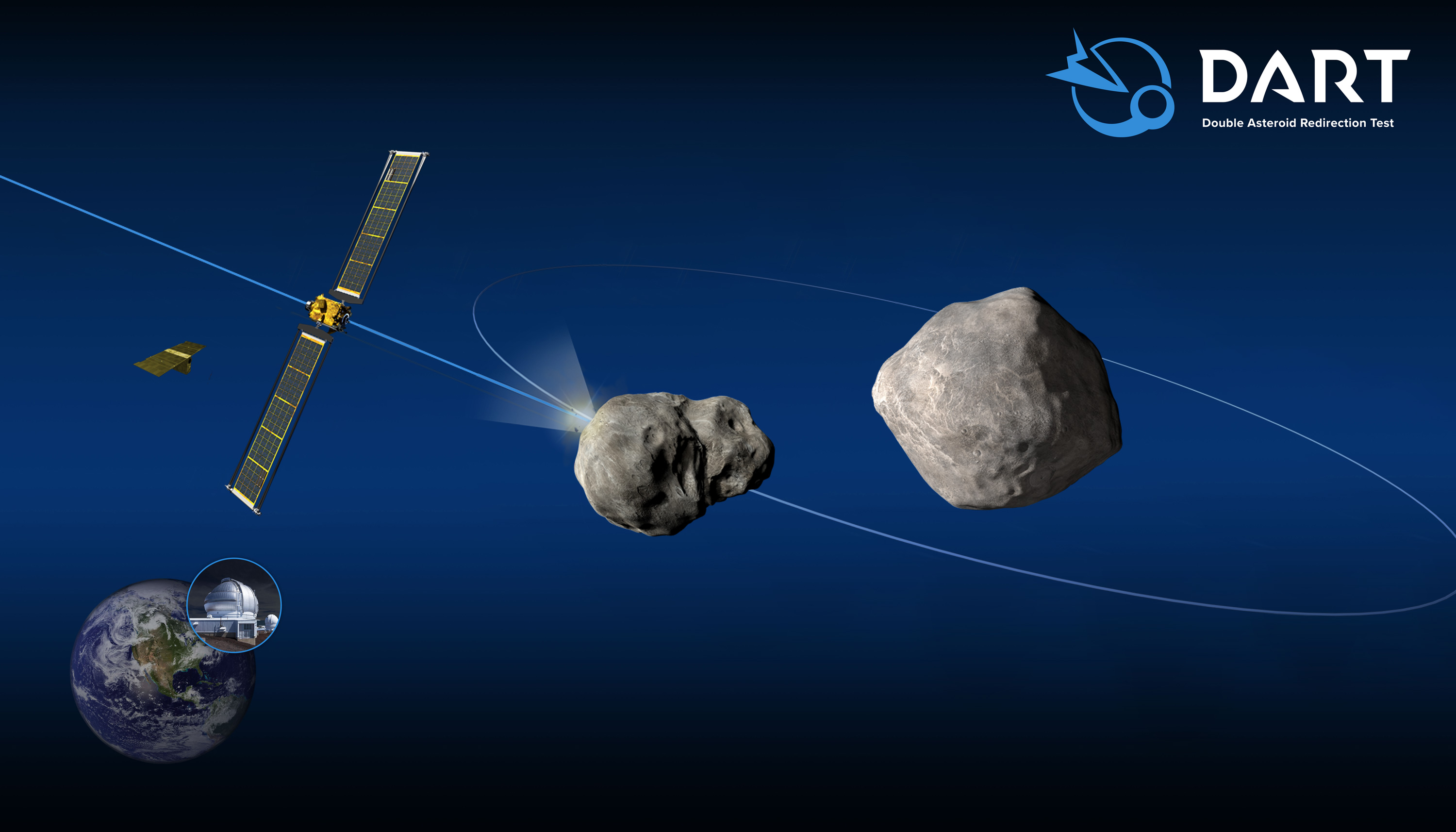DART timeline: What's next for NASA's asteroid-smacking mission after launch

NASA's first planetary defense mission is underway, though we'll have to wait a little while for its promised in-space fireworks.
The Double Asteroid Redirection Test (DART) probe launched from Vandenberg Space Force Base in California early Wednesday morning (Nov. 24), riding a SpaceX Falcon 9 rocket into the final frontier.
In late September or early October of 2022, the 1,210-pound (550 kilograms) DART spacecraft will slam into a small asteroid named Dimorphos, changing the space rock's orbit around its larger companion, Didymos. Astronomers will quantify that change, gauging the effectiveness of the "kinetic impact" method of asteroid deflection — a strategy humanity might need to employ in the future against a rock that lines Earth up in its crosshairs.
Related: NASA's DART asteroid-impact mission explained in pictures
The DART team won't be twiddling its thumbs until the big collision, of course. Every space mission is packed with milestones, which tend to come fast and furious in the first few weeks after launch.
For example, DART is now in the commissioning period, a 30-day stretch just after liftoff in which mission team members are checking out the spacecraft's various systems and its main scientific instrument, a camera called DRACO ("Didymos Reconnaissance and Asteroid Camera for Optical navigation").
And DRACO will open its eyes soon, if all goes according to plan.
Breaking space news, the latest updates on rocket launches, skywatching events and more!
"We're going to open the DRACO doors and ... take [our] first pictures about eight days in," Elena Adams, DART mission systems engineer at the Johns Hopkins University Applied Physics Laboratory in Maryland, said during a pre-launch news conference on Nov. 4.
Related: If an asteroid really threatened the Earth, what would a planetary defense mission look like?
Another big moment will come about 20 days into flight, Adams said, when the DART team fires up NASA's Evolutionary Xenon Thruster-Commercial (NEXT-C) engine, which was developed by the agency's Glenn Research Center and the aerospace company Aerojet Rocketdyne.
NEXT-C is a solar-powered ion propulsion system that could find its way onto future spacecraft. It's not DART's primary propulsion system — the probe is using a set of 12 hydrazine thrusters to make its way toward the Didymos-Dimorphos pair — but NEXT-C will get a key in-space test during the mission.
The action will ramp up considerably as DART nears its target. DRACO will capture its first imagery of the Didymos system 30 days before impact, Adams said. Those photos will help the probe refine its course toward Dimorphos. Then, 10 days before impact, DART will deploy a tiny Italian spacecraft called LICIACube, which will zoom past Dimorphos just after the collision to observe its immediate effects.
Those effects could be quite striking, given that DART will slam into Dimorphos at about 15,000 mph (24,000 kph). The impact will occur when the Didymos system is roughly 6.8 million miles (11 million kilometers) from Earth, about the closest the two asteroids get to our planet on their elliptical path around the sun. And that's no coincidence.
"That timing allows scientists to make higher-quality telescopic observations of Didymos after the collision," DART team members wrote in the mission's press kit. "The last time Didymos was this close to Earth was in 2003; the next time will be in 2062."
Observations of Didymos and Dimorphos will continue well into the future, and not just from afar. A few years from now, the European Space Agency plans to launch a spacecraft called Hera, which will journey to the Didymos system to get an up-close look at the damage DART did.
Mike Wall is the author of "Out There" (Grand Central Publishing, 2018; illustrated by Karl Tate), a book about the search for alien life. Follow him on Twitter @michaeldwall. Follow us on Twitter @Spacedotcom or on Facebook.

Michael Wall is a Senior Space Writer with Space.com and joined the team in 2010. He primarily covers exoplanets, spaceflight and military space, but has been known to dabble in the space art beat. His book about the search for alien life, "Out There," was published on Nov. 13, 2018. Before becoming a science writer, Michael worked as a herpetologist and wildlife biologist. He has a Ph.D. in evolutionary biology from the University of Sydney, Australia, a bachelor's degree from the University of Arizona, and a graduate certificate in science writing from the University of California, Santa Cruz. To find out what his latest project is, you can follow Michael on Twitter.
